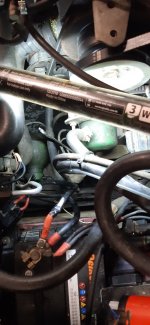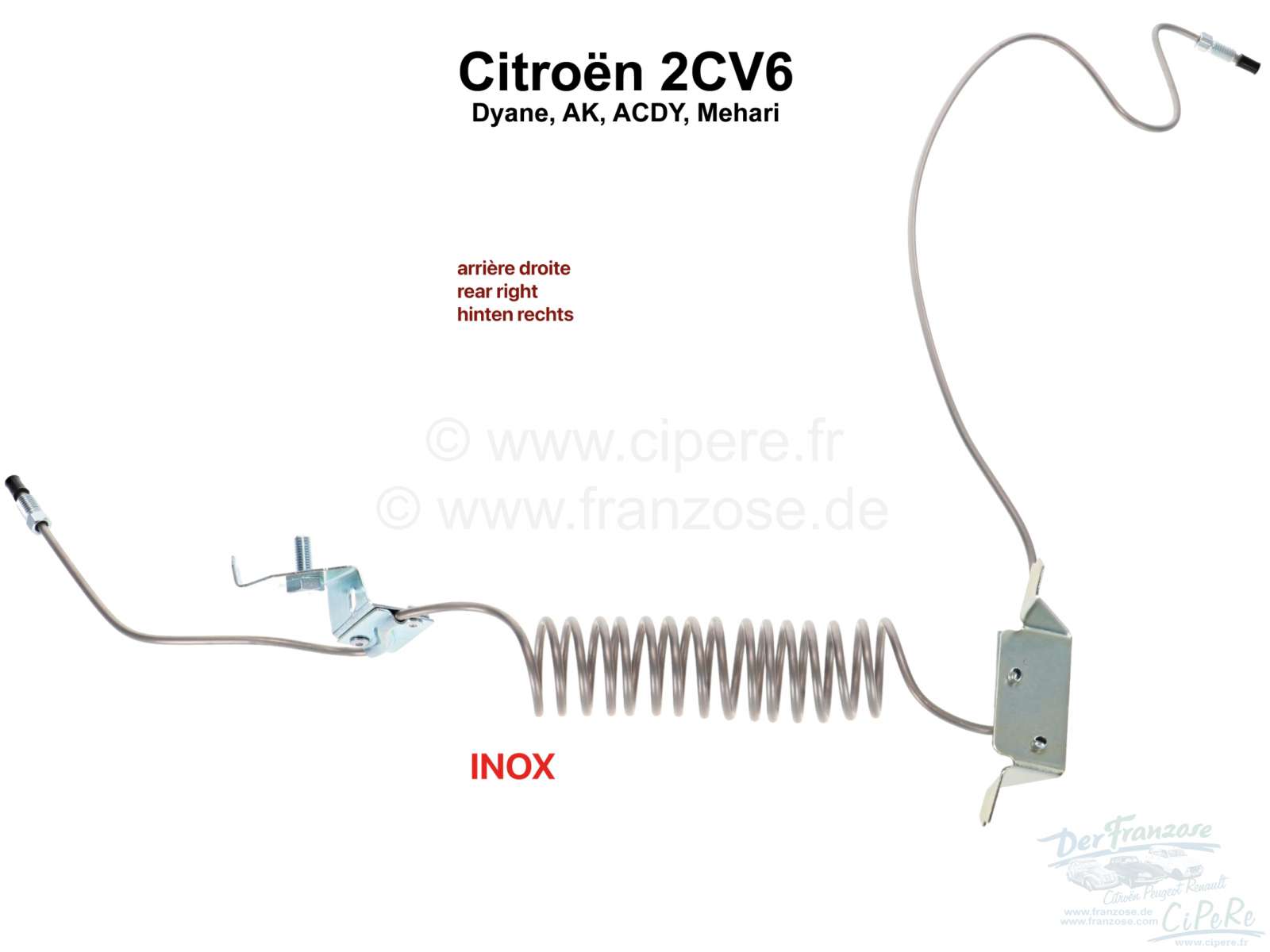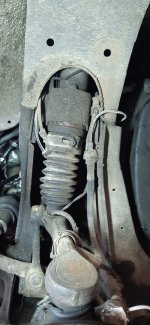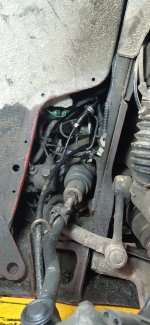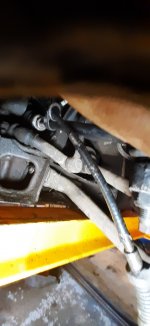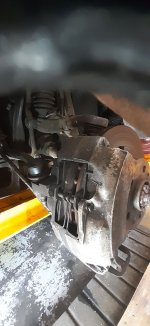I've noticed we have a lot of new members here these days that have probably never really seen threads on the old Citroens. So after finding the car had lost prime and the hydraulic pump was having a fit yesterday when I moved the car I thought I'd start a thread giving a quick overview of these old cars. And why us owners find them so fascinating.
Everyone has probably seen pictures of this car all over the place. Its been featured on aussiefrogs since the forum started.

Yes it sits low and it has the "up and down" suspension. This one is getting pretty battered and needs a good clean up.... but don't worry, we'll get to it eventually. If you have an opportunity to get any old Citroen ..... Jump for it! They are just fascinating old cars .... CX, BX, GS, DS, SM .. Go For it!! You only live once.
Thy hydraulics aren't scary and are the soul of these old cars. Yes, the suspension is just "balls"... The "balls" or spheres. They are just a sphere with a rubber diaphragm in the middle. On one side of the diaphragm is nitrogen, on the other is the hydraulic fluid. So when a sphere is "blown" it diaphgram have developed a leak and allowed the nitrogen to escape. What I know has happened with this car (because of the way its acting) is the main accumulator has "blown". The is hydraulics systems storage. So normally I can hear the pump run every 15 -> 60seconds. Suddenly its cutting in and out nearly every second or so.


If we look under the front of the car .... there it is swinging in plain view ( Hmm... where is this cars undertray ?). Anyway, what you can see is the main accumulator and brake accumulator. These are both pressure storage for the brakes and suspension/steering.

First thing you need to do is release any pressure in the hydraulic system. Where the spanner is attached you open 1/2 turn to release the pressure (I don't need to as this accumulator will be dead .... no doubt).

No fancy tools required. To whip the spheres off I just use an old socket with a bit of seatbelt webbing wrapped around it.

They just unscrew easily. If the sphere stays tight once you have loosened it .... be REALLY careful, you may still have hydraulic pressure behind it.


They just unscrew quite easily. See the sphere has fluid inside it .... You should just see the middle of the diaphragm. So the diaphragm is "blown" and the sphere is full of hydraulic oil.
Everyone has probably seen pictures of this car all over the place. Its been featured on aussiefrogs since the forum started.
Yes it sits low and it has the "up and down" suspension. This one is getting pretty battered and needs a good clean up.... but don't worry, we'll get to it eventually. If you have an opportunity to get any old Citroen ..... Jump for it! They are just fascinating old cars .... CX, BX, GS, DS, SM .. Go For it!! You only live once.
Thy hydraulics aren't scary and are the soul of these old cars. Yes, the suspension is just "balls"... The "balls" or spheres. They are just a sphere with a rubber diaphragm in the middle. On one side of the diaphragm is nitrogen, on the other is the hydraulic fluid. So when a sphere is "blown" it diaphgram have developed a leak and allowed the nitrogen to escape. What I know has happened with this car (because of the way its acting) is the main accumulator has "blown". The is hydraulics systems storage. So normally I can hear the pump run every 15 -> 60seconds. Suddenly its cutting in and out nearly every second or so.
If we look under the front of the car .... there it is swinging in plain view ( Hmm... where is this cars undertray ?). Anyway, what you can see is the main accumulator and brake accumulator. These are both pressure storage for the brakes and suspension/steering.
First thing you need to do is release any pressure in the hydraulic system. Where the spanner is attached you open 1/2 turn to release the pressure (I don't need to as this accumulator will be dead .... no doubt).
No fancy tools required. To whip the spheres off I just use an old socket with a bit of seatbelt webbing wrapped around it.
They just unscrew easily. If the sphere stays tight once you have loosened it .... be REALLY careful, you may still have hydraulic pressure behind it.
They just unscrew quite easily. See the sphere has fluid inside it .... You should just see the middle of the diaphragm. So the diaphragm is "blown" and the sphere is full of hydraulic oil.

 I have been really crazy and retentive about keeping onto of servicing. So the reason this one failed is I last checked it Jan 13 ... Only a mere 10years ago
I have been really crazy and retentive about keeping onto of servicing. So the reason this one failed is I last checked it Jan 13 ... Only a mere 10years ago 
 Yep, those rear brakes will probably be doing every bit as much braking as the fronts. Now the trailing arm suspension and the fact you are taking the pressure from the rear brakes from the rear suspenion means the car will brake dead evenly ... No nose diving. Infact I've driven CX and DS that tail dive under hard braking (how is that for keeping effective suspension control to prevent oversteer while panic braking).
Yep, those rear brakes will probably be doing every bit as much braking as the fronts. Now the trailing arm suspension and the fact you are taking the pressure from the rear brakes from the rear suspenion means the car will brake dead evenly ... No nose diving. Infact I've driven CX and DS that tail dive under hard braking (how is that for keeping effective suspension control to prevent oversteer while panic braking).